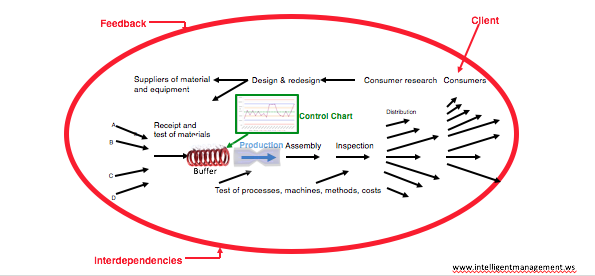
In our last post Understanding Uncertainty and Systemic Risk in Organizations we explained how management must involve the management of variation. Every single process, relationship and communication in our organization, whether we are aware of it or not, is affected by variation. If we ignore variation then we are not managing, and if we are not managing then “risk management” loses its meaning.
The next question then becomes: How can we shelter our organization from the risk associated with the impact of managed variation?
Leveraging the constraint
In 1982 Dr. Goldratt published a novel called “The Goal” aimed at illustrating how a production flow could be radically improved. This can be done when the whole set of components making up the organizational system is synchronized to optimize the functioning of one element, the constraint, i.e. the leverage point in the system. “The Goal” since then has sold almost 10 million copies in some 30 languages and became mandatory reading in every business school; its message can be distilled as: “ When the constraint stops, the organization stops”.
Reducing uncertainty through a constraint
We can reduce drastically the impact of uncertainty, hence minimizing risks for the entire organization, if we protect the constraint appropriately and we ensure that the range of oscillation of all the processes feeding the constraint are manageable, i.e. exhibit a statistically predictable level of variation.
Conceptually, from a Deming-Goldratt perspective the take on risk management in an organization is simple: build a statistically robust, low variation, network of processes and synchronize it on a strategically chosen and well protected constraint, as risk is exponentially higher there.
An organizational design to reduce risk
The liberating choice for the decision makers is to design an organization that is built to reduce risk. By managing risk through constraints, risk is dealt with upstream, leaving more mental energy to make the vision of the organization real instead of always reacting to fear.
(The diagram below illustrates an organization built systemically around the constraint of Production.)

See also:
Understanding Uncertainty and Systemic Risk in Organizations
Sign up to our blog here and shift your thinking towards broader, systemic possibilities for yourself and your organization. Intelligent Management provides education and training on systemic management, W. Edwards Deming’s management philosophy and the Theory of Constraints (Decalogue methodology) in North America and Europe.
About the Blog Author and Editor
Angela Montgomery Ph.D. is Partner and Co-founder of Intelligent Management and author of the business novel+ website The Human Constraint that has sold in over 20 countries. She is co-author with Dr. Domenico Lepore, founder, and Dr. Giovanni Siepe of ‘Quality, Involvement, Flow: The Systemic Organization’ from CRC Press, New York.





Leave a Reply